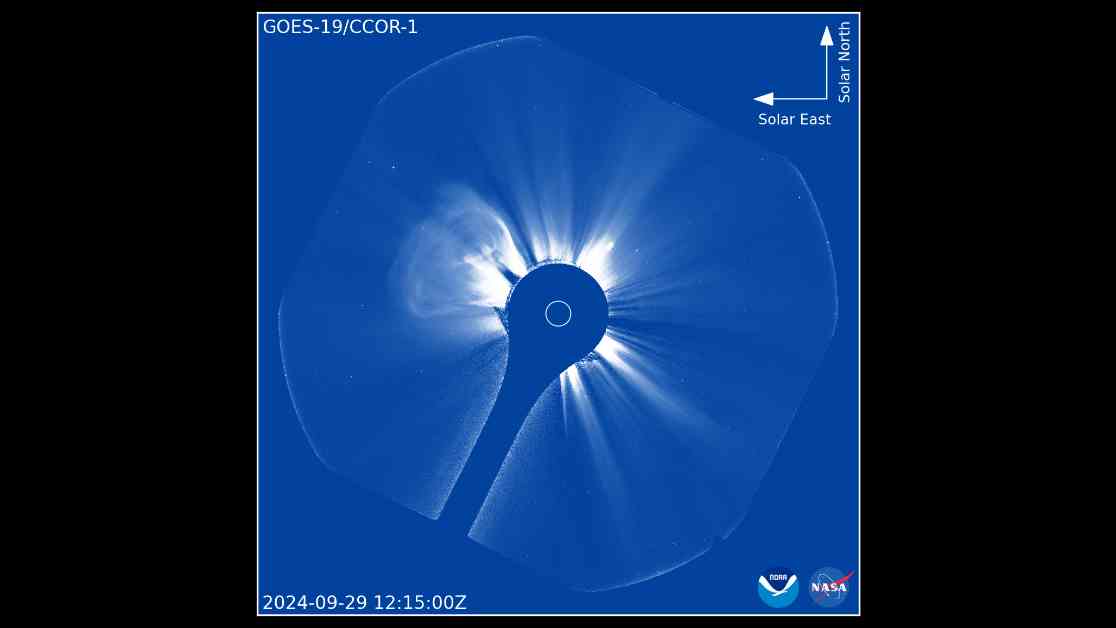NOAA has recently revealed the first images captured by the Compact Coronagraph (CCOR-1), a cutting-edge solar telescope installed on the new GOES-19 satellite. This advanced technology marks the world’s inaugural operational, space-based coronagraph, which commenced its observation of the sun’s corona, the faint outer layer of the solar atmosphere, on September 19, 2024.
The primary purpose of CCOR-1 is to monitor the corona and predict coronal mass ejections (CMEs). These CMEs are massive eruptions of plasma and magnetic fields from the sun that can lead to significant space weather impacts on Earth. When these CMEs are directed towards our planet, they have the potential to cause geomagnetic storms and various other space weather phenomena that can affect satellites, GPS systems, astronaut safety, aviation communications, and power grids. The mesmerizing Aurora displays visible on Earth are the direct result of these storms interacting with our planet’s upper atmosphere.
One of the remarkable features of CCOR-1 is its ability to provide continuous coverage of the corona, capturing a new image every 15 minutes. By utilizing an occulting disk to block out the sun and reveal the extremely faint corona, CCOR-1 offers a unique perspective on solar activity. The initial video released by CCOR-1 showcases a distinct CME emerging from the east limb of the sun, accompanied by small and large streamers and bright radial structures through which solar plasma flows outward. These CME explosions can bend and disrupt the plasma, traveling at astonishing speeds ranging from hundreds to thousands of miles per second.
CCOR-1 is just the first of many coronagraphs planned by NOAA. Future instruments will be strategically positioned on the sun-Earth line and around the sun as part of NOAA’s Space Weather Follow-On and Space Weather Next initiatives. As the GOES-19 satellite undergoes thorough testing and system checks post-launch, it is expected to assume the operational role as NOAA’s GOES East satellite in the spring of 2025. Once in operation, the Space Weather Prediction Center at NOAA will utilize observations from CCOR-1 to enhance their forecasts and warnings related to impending space weather events.
It is essential to note that while data obtained from GOES-19 during the testing phase is valuable, it should be regarded as preliminary and non-operational until the satellite is officially commissioned for operational use. This groundbreaking technology represents a significant leap forward in our understanding of space weather and its potential impacts on Earth, paving the way for enhanced forecasting and mitigation strategies in the future.













